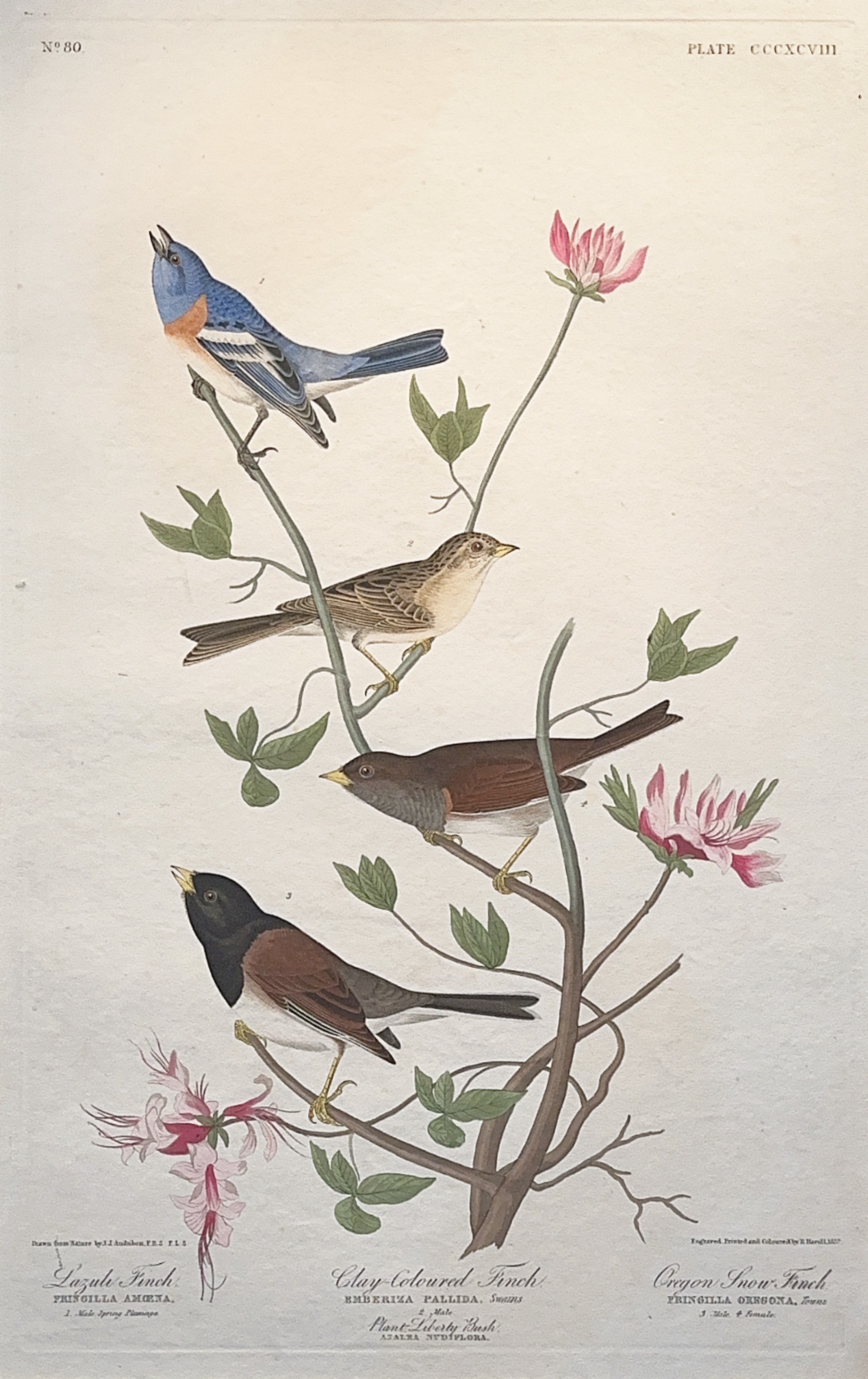
Plate 424
Havell CCCXCVIII
Lazuli Finch
Clay-colored Finch
Oregon Snow Finch
Audubon drew two juncos (a female at top, a male at center) from specimens found on the Columbia River by Dr. Townsend; in his text, Audubon quotes Thomas Nuttall, who was impressed by the bird's reticence: " ... they rarely utter. [a] chirp... We. saw them inhabiting the same woods throughout the summer, in diminished numbers, or in pairs, but I do not recollect hearing them utter any song, though they are probably not silent in the season of breeding.' "The clay-colored sparrow at bottom was much less shy, and was described by a British naturalist as '"familiar and confident as the common house-sparrow of England,' " Audubon's subject was a male, and he mentioned smaller size and slightly duller coloration as characteristic of the female. He planned to have a lesser redpoll included in the engraving (his instructions, between the two juncos, are barely legible); but Havell substituted a lazuli bunting and rearranged the birds on the branches of a plant drawn by Maria Martin. This drawing was probably made in Charleston, South Carolina, in the winter of 1836-37.
Source: The Original Water-Color Paintings by John James Audubon. Copyright 1966 by American Heritage Publishing Co., Inc.
Learn more about this print on the National Audubon Society's website.

